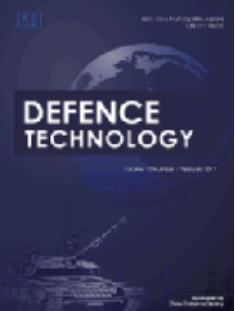Three-dimensional burning crack dynamics in constrained spherical explosive: visualization analysis and cavity-coupled pressure modeling
IF 5.9
Q1 ENGINEERING, MULTIDISCIPLINARY
引用次数: 0
Abstract
Accurate characterization of three-dimensional burning crack propagation remains pivotal yet challenging for energetic material safety, as conventional diagnostics and models inadequately resolve coupled crack-pressure dynamics in confined explosives. This study combines a novel spherical confinement system (with/without sapphire windows) with synchronized high-speed imaging and 3D reconstruction to overcome optical limitations in opaque explosives. Experimental analysis of centrally ignited HMX-based PBX-1 reveals: (1) burning cracks propagate radially with equatorial acceleration and polar deceleration, (2) systematic formation of 3–4 dominant crack branches across geometries, and (3) pressure evolution exhibiting gradual accumulation (subsurface cracking) followed by exponential growth (surface burn-through), with decay governed by cavity expansion. Building on Hill's framework, we develop a model incorporating cavity volume and fracture toughness criteria, validated against PBX explosive (95% HMX-based) experiments. The model demonstrates improved prediction of pressure trends compared to prior approaches, particularly in resolving laminar-phase accumulation and crack-induced surge transitions. Results establish structural cavity volume as a critical modulator of measured pressure and reveal direction-dependent crack kinematics as fundamental features of constrained combustion. This work provides experimentally validated insights into mechanisms of reaction pressure development and burning cracks pathways during constrained PBX explosive combustion.
约束球形炸药三维燃烧裂纹动力学:可视化分析和空腔耦合压力建模
由于传统的诊断和模型不能很好地解决密闭炸药中裂纹-压力耦合动力学问题,因此准确表征三维燃烧裂纹扩展对含能材料安全至关重要,但也具有挑战性。该研究结合了一种新型的球形约束系统(带/不带蓝宝石窗)与同步高速成像和3D重建,以克服不透明炸药的光学限制。基于hmx的PBX-1的中心点燃实验分析表明:(1)燃烧裂纹以赤道加速和极地减速的方式径向扩展;(2)在几何形状上系统地形成3 - 4个优势裂纹分支;(3)压力演化表现为逐渐积累(地下开裂)然后指数增长(表面烧透),衰减由空腔扩张控制。基于Hill的框架,我们开发了一个包含空腔体积和断裂韧性标准的模型,并通过PBX炸药(95% hmx为基础)实验进行了验证。与之前的方法相比,该模型对压力趋势的预测有所改进,特别是在解决层流相堆积和裂缝引起的浪涌转变方面。结果表明,结构腔体体积是测量压力的关键调节器,并揭示了方向相关的裂纹运动学是约束燃烧的基本特征。这项工作提供了实验验证的见解,反应压力的发展机制和燃烧裂纹路径在受约束的PBX炸药燃烧。
本文章由计算机程序翻译,如有差异,请以英文原文为准。
求助全文
约1分钟内获得全文
求助全文
来源期刊

Defence Technology(防务技术)
Mechanical Engineering, Control and Systems Engineering, Industrial and Manufacturing Engineering
CiteScore
8.70
自引率
0.00%
发文量
728
审稿时长
25 days
期刊介绍:
Defence Technology, a peer reviewed journal, is published monthly and aims to become the best international academic exchange platform for the research related to defence technology. It publishes original research papers having direct bearing on defence, with a balanced coverage on analytical, experimental, numerical simulation and applied investigations. It covers various disciplines of science, technology and engineering.
 求助内容:
求助内容: 应助结果提醒方式:
应助结果提醒方式:


